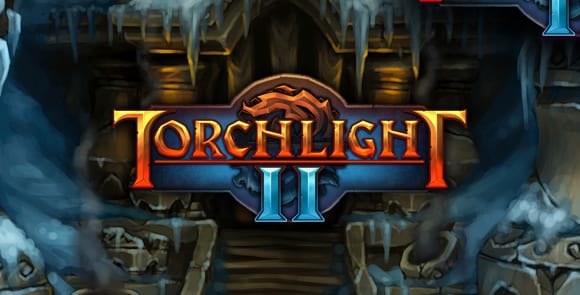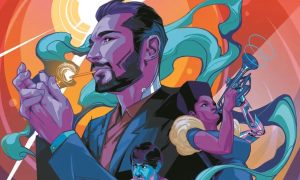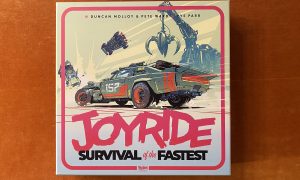
Titan Quest, Divine Divinity, Dungeon Siege (the first two), Sacred, Path of Exile, Nox, and Torchlight; all of these titles have one thing in common – they are some of the best Diablo II clones ever made. Unfortunately, other than Torchlight, they also have something else in common – none of them sold well. Torchlight hit Steam in 2009, courtesy of a partnership between developer Runic Games and publisher Perfect World. The game hit hard with a huge following, and there was no doubt that we loved it at Gaming Trend, giving the original a 94%. What made it huge was just the right dose of stylized graphics, challenging levels and bosses, and a staggering amount of content for just $20. There was one big thing that was missing – Torchlight didn’t have multiplayer. Fast forward three years and it’s time to return to the world of the Estherians…only this time, bring some friends!
Torchlight II begins after the events of the original Torchlight with a new addition to the franchise – a cutscene. Courtesy of partner Klei Entertainment (the guys who handled the visuals for Shank), the storyline is explained courtesy of a sepia-toned trailer that explains that The Alchemist from the first game has been corrupted by the Ember Blight coming from the Heart of Ordrak. This Blight has destroyed the town of Torchlight, enabling The Alchemist to corrupt the guardians of the world. None of that really matters a whole lot…let’s get to the heady task of whacking things with spells, swords, and sticks and making gold and items explode out of them like twisted little piñatas!
[singlepic id=9033 w=320 h=240 float=left]Torchlight featured a very simple format, giving players health bottles, mana bottles, and a semi-cell shaded look that has become the series’ signature style. Torchlight II continues that tradition, adding very little to the overall interface and just sharpening an already-solid looking graphic engine. That isn’t to say that there aren’t improvements – there are plenty of those.
Let’s talk about resolutions. Torchlight II supports 16 resolutions ranging from 800×600 all the way up to 1920×1080 (update: we’ve confirmed resolutions including 2560×1440!), and clearly anything in between. It also supports UI scaling (a rarity in PC gaming and non-existent on any console title), Anti Aliasing, adjustments to map opacity, and various other display options. Surprisingly, buried in here is also a cool option that allows you to simply turn off the display of any loot under a certain value. This means you can turn off the display of any vendor trash, or any value of magic items – handy for when you want to keep playing after completing the game – just not sure why it’s buried like that. Even at the highest resolution, the game doesn’t push your graphics card a whole lot, making the game more accessible to a wider audience. The fact that the frame rate never wanders is just icing on the cake.
Improvements abound in the interface, but they are actually quite subtle. Simple improvements include pressing Z or X to drink your highest-value health or mana potion. Sure, you can still use them in your quickslots, or perhaps assign lesser potions to those locations to switch things up, but it’s a nice subtle change. Similarly, if you press the space bar all open windows are closed. Pressing it with no open windows brings up your stat window and character paperdoll/inventory. Shift clicking items when your pet inventory is open automatically transfers them across. Little things like this keep the pace moving, even with quite a few players in the mix.[singlepic id=9032 w=320 h=240 float=right]
Speaking of pets, your little critter sidekicks get a bit of an upgrade too. They can now equip little trinkets to make them more powerful; they’ll attack your enemies, look super cute, and carry your loot back to town so you don’t have to! Just as before, you can send them to town with a shopping list for items like potions and various scrolls. There are eight critters to choose from (up from the original two), but none of them beat my little goggles-wearing ferret “Tookit” – he’s awesome. Other improvements are more subtle, giving more visual clues to damage (purple means you fumbled your attack, blue are criticals, etc.) and spell interactions.
Adding to the gameplay mechanics, all players now have a charge bar at the bottom of their screen. Through causing damage the bar will eventually charge, giving a short window where you can unleash your attacks without cost and do an additional 25% damage. This can mean the difference between success and failure against some of the more challenging bosses, so managing this bar is necessary. When you get to Phase Challenges (a special portal that allows a big challenge in rewards for big prizes) this mechanic may just save your bacon!
[singlepic id=9029 w=320 h=240 float=left]Torchlight featured three characters – the Destroyer, Alchemist, and Vanquisher. The Destroyer was your melee fighter, the Vanquisher are more of a ranger class, and the Alchemist is your summoner/spellcaster class. Torchlight II tosses these classes in favor of four new roles – the Engineer (steampunk / melee fighter), Embermage (elemental spellcaster), The Berserker (a heavy melee class using animal powers to vanquish their foes), and the Outlander (a blend between ranger and spellcaster). These four classes can now be male or female, giving players a handful of cosmetic customization options (not that it matters – you’ll be covering it with gear soon enough). It’s the loot and skills that really do the trick…
As somebody who waited with baited breath for Diablo III, I was surprised at how much it failed to scratch my loot whoring itch. Let me tell you – that isn’t a problem in Torchlight II. Split into tiers like most RPGs, you’ll receive a steady injection of cool loot in Torchlight II, but it’s how you use it that really changes how your character plays out. Item stats include increased critical chance, elemental or poison damage, mana or health regen, as examples. When you start getting into all of the set items in the game, you’ll quickly find your stash and shared stash filled with all sorts of goodies. As the game progresses you’ll be able to add sockets to items, add random enchantments, add specific traits like additional magic find %, and many others. Beyond that, there is a shop for random unidentified items, a shop to rip gems out of items or destroy items to reclaim gems, respeccing, and many more options to make Torchlight II play exactly as you want. The only mystery here is the Blacksmith. After a dozen hours of play I can’t say I bothered to visit the blacksmith for anything. Just like in all three Diablo titles – the Blacksmith just doesn’t have a single useful item…ever.
Torchlight as a town in the game was a central hub to allow players to embark deep into the Ember Mines, but Torchlight II lets players branch out into a larger open world. Still randomized, the game lets players explore an open world with multiple towns and environments. New effects including rain, lightning, blistering sandstorms, and more help bring the game to life. Beyond that, when you do complete the game you can pop back in and run it again with New Game+. This game mode lets you keep your skills, cash, loot, and stats to take another run at the game.
[singlepic id=9019 w=320 h=240 float=left]One of the biggest complaints users had about Diablo III was requirement to be online to play the game, even in singleplayer mode. Blizzard has their reasons and arguments for that decision, but the fact is I’m preparing to fly 19 hours at the end of this month – and that’s 19 hours where I can’t play Diablo III. What I can play is Torchlight II. In fact, I can set up a short-range LAN and play with my wife, play with friends online (latency on a plane permitting – but you get the point), and play single-player offline at any point. I can mix and match any of those items with the same character. The game supports 6 players in multiplayer right out of the box, but with modding (yea, the game supports it again! Woohoo!) you’ll be able to push that number much higher. You can even play PvP if you are inclined.
So you’ll notice something about this review…there isn’t a single negative thing I can say about Torchlight II. The graphics aren’t going to push your game like Crysis 3…but this game costs $20. The voice work is decent but the game isn’t fully voiced – about what I’d expect for $20. The multiplayer can be played online, offline, LAN, and up to 6 players – and that’s worth WAY more than $20. This game has well over 25 hours of content, plus randomization – something games at $60 dollars can’t claim. Torchlight II represents the perfect iteration of a series, combining solid innovation from Runic along with a deluge of feedback courtesy of fans and player mods. Runic and Perfect World have given us everything we’ve asked for – I can’t think of a single game that can make that claim in recent memory.
Ron Burke is the Editor in Chief for Gaming Trend. Currently living in Fort Worth, Texas, Ron is an old-school gamer who enjoys CRPGs, action/adventure, platformers, music games, and has recently gotten into tabletop gaming.
Ron is also a fourth degree black belt, with a Master's rank in Matsumura Seito Shōrin-ryū, Moo Duk Kwan Tang Soo Do, Universal Tang Soo Do Alliance, and International Tang Soo Do Federation. He also holds ranks in several other styles in his search to be a well-rounded fighter.
Ron has been married to Gaming Trend Editor, Laura Burke, for 28 years. They have three dogs - Pazuzu (Irish Terrier), Atë, and Calliope (both Australian Kelpie/Pit Bull mixes), and an Axolotl named Dagon!

See below for our list of partners and affiliates:

























